-
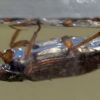 +3 +1
+3 +1You Won’t Believe How This Beetle Walks on Water
Scientists observed a beetle walking upside-down on the undersurface of a pool of water.
-
 +20 +1
+20 +1Beetle that can walk upside down under water surface filmed in Australia in world first
Researcher accidentally spots tiny insect walking on the underside of the water surface as if it were a pane of glass
-
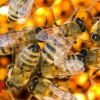 +25 +3
+25 +3Tech firms use remote monitoring to help honey bees
From Ireland to Israel, companies are coming to the aid of the environmentally critical insect.
-
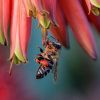 +17 +4
+17 +4A single honeybee has cloned itself hundreds of millions of times
The workers of a South African subspecies of honeybee can clone themselves, with one individual having done so many millions of times over the past 30 years. Some of the clones can even develop into queens that can take over the hive.
-
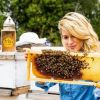 +23 +5
+23 +5'Over the top': backlash against TikTok's bee lady not justified, say bee experts
Erika Thompson is clearly a competent beekeeper, who's educating the public about honeybees in her own way on social media.
-
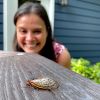 +6 +1
+6 +1Cicadas make their Olympic debut in miniature art scenes
Cicadas competing in the Olympics or jamming in a band? How about a line of cicadas waiting in line for vaccinations at CVS? The appearance of the insects known as Brood X, or Brood 10, along the eastern United States after a 17-year hiatus has inspired Virginia professional portrait photographer Oxana Ware to create small-scale art installations, placing the ubiquitous bugs in novel and unexpected settings.
-
 +16 +1
+16 +1New 'superfood' for bees may be able to help detoxify hives contaminated with pesticides
Researchers have synthesized a particle as small as pollen, which, when fed to bees, may be able to help them to detoxify hives damaged by pesticides, in an effort to protect the insects.
-
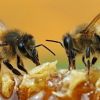 +20 +3
+20 +3'Unbelievable' Video Shows Two Bees Work Together to Unscrew a Soda Bottle
While we all recognize bees for their importance in our food chain as pollinators, the clever creatures have a series of other talents, including math ability, face recognition, and even tool use.
-
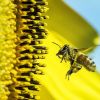 +2 +1
+2 +1A new method for delivering insecticide antidote could boost bee survival
Microparticles that detoxify insecticides in bee guts could help beekeepers keep their hives healthy and productive, according to a new study.
-
 +21 +3
+21 +3Brood X cicadas threatened by 'death-zombie fungus' that rots half their bodies away
A fungus with the same chemical as psychedelic mushrooms eats away cicadas' abdomens and alters their behavior in strange ways.
-
 +15 +1
+15 +1Roads and highways disrupt bee pollination
The world's network of road and highways may be harming insects and the plants they pollinate. Roads and highways may be harming plants and bees.
-
 +16 +3
+16 +3Japanese firm installs vending machine selling nothing but munchable insects
New Japanese vending machines sell only edible insects. The nine options include deep-fried or dried crickets, locusts, and silkworm chrysalises.
-
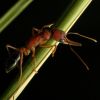 +15 +3
+15 +3The Incredible Shrinking And Growing Brains Of Indian Jumping Ants
New research on ants has shown a first in insects: the ability to shrink and then regrow their brains in a big way. It relates to how these particular ants, called Harpegnathos saltator, or the Indian jumping ant, reproduce.
-
 +4 +1
+4 +1Mechanical gears in jumping insects
-
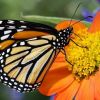 +19 +4
+19 +4Monarch butterflies down 26% in Mexico wintering grounds
The number of monarch butterflies that showed up at their winter resting grounds in central Mexico decreased by about 26% this year, and four times as many trees were lost to illegal logging, drought and other causes, making 2020 a bad year for the butterflies.
-
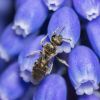 +3 +1
+3 +1We haven’t seen a quarter of known bee species since the 1990s
Bees feed us. Many of the 20,000 species pollinate 85 percent of food crops and fruits around the world—everything from garlic and grapefruits to coffee and kale. But, it seems, these crucial insects aren’t doing very well. A study published today in the journal One Earth reveals that in recent decades, the number of bee species reported in the wild has declined globally. The sharpest decrease occurred between 2006 and 2015, with roughly 25 percent fewer species spotted—even as sightings by citizen scientists were increasing rapidly.
-
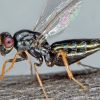 +12 +1
+12 +1Dismay greets end of U.S. effort to curb spread of tree-killing beetle
States, tribes oppose federal move to end quarantines and rely on tiny wasps to fight emerald ash borer
-
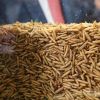 +4 +1
+4 +1World’s Largest Insect Protein Farm Signals Future Of Food Supply
New plant by InnovaFeed and Archer Daniels Midland will produce 60,000 metric tons of animal feed protein per year, a step toward mainstreaming the low-carbon method of feeding the world's farm animals. "If they can pull this off, it will be magnificent,” said one researcher.
-
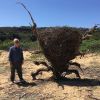 +17 +5
+17 +5The rare allergy that turned me into a vegetarian
I'm one of a small number of Australians with a potentially deadly allergy to red meat. And it's all thanks to a creature as small as a grain of sand, writes Menios Constantinou.
-
 +13 +2
+13 +2480 bugs per bottle: Aichi miso maker creates cricket soy sauce
"The miso maker, which has seen brisk sales of its bug products, is now preparing for a second round of soy sauce production."
Submit a link
Start a discussion




















